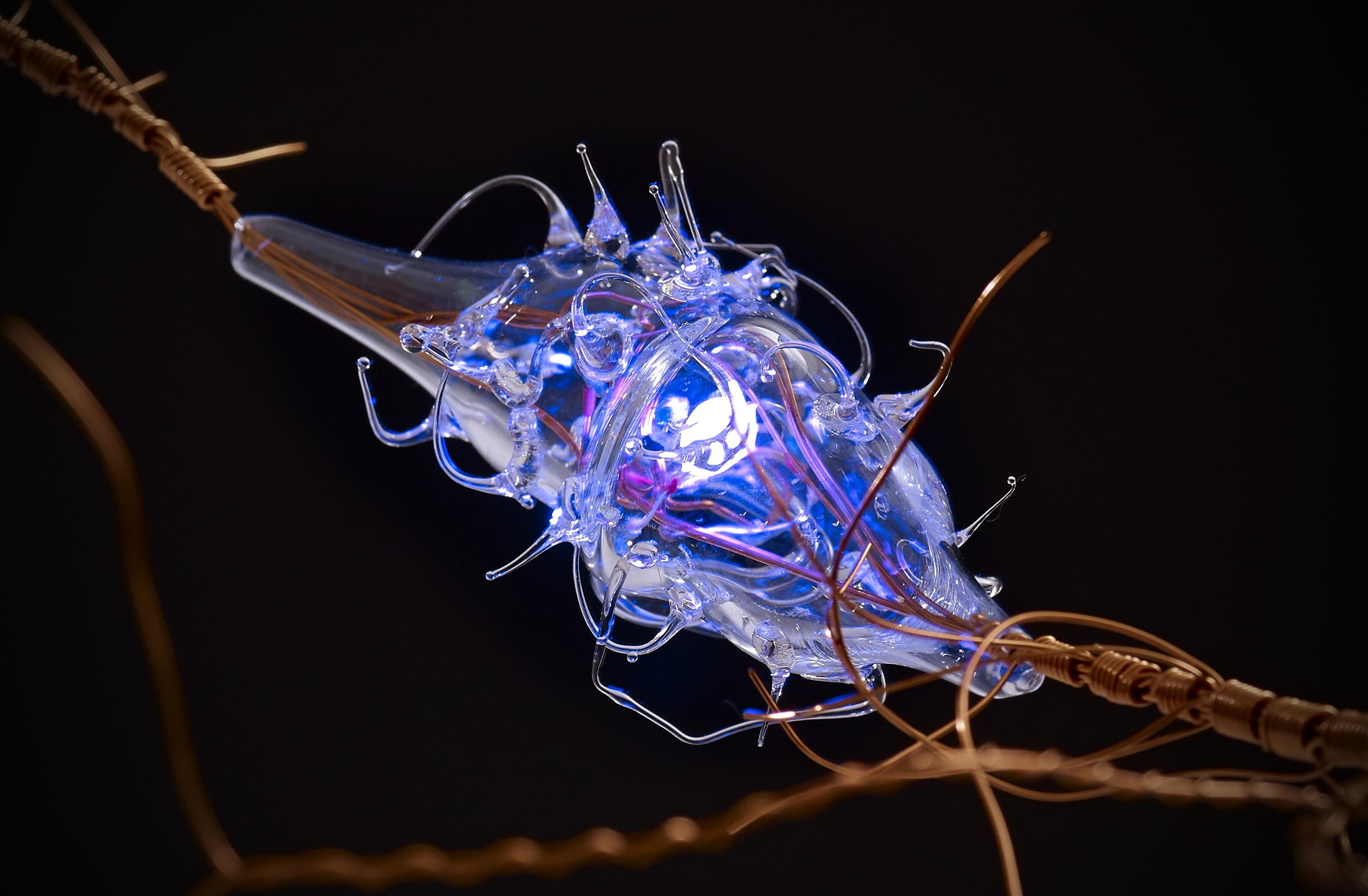
Traversing the interface between art and neuroscience
By April Cashin-Garbutt
Art is often said to be a universal language. Allowing us to transcend boundaries and communicate complex ideas, it is appealing to explore how the interface between art, science and technology could open up new perspectives in neuroscience. Line of Sight, an interactive art installation unveiled today at the Sainsbury Wellcome Centre, offers us that exciting prospect.
Inspired by research on the primary visual cortex, Line of Sight was created by a collaboration between glass artist Jenny Walsh and Dr Eirinn Mackay, former Research and Innovation Engineer in the SWC Fablab. In the same way that neurons in the primary visual cortex selectively fire based on visual features seen by the retina, Line of Sight adapts to movement creating an array of lights symbolising the flow of information through neural networks.
Finding a common language
“When you work with scientists, there can sometimes be an anxiety that the scientific research you’re looking at will be ‘watered down’ by the artist, but the way I work is not about ‘watering it down’ but about boiling it down to its essence,” said Jenny Walsh.
As an artist, Jenny looks for ways to communicate scientific research, while the scientific collaborators ensure the artwork sticks within the parameters of the facts. To enable this fruitful collaboration, Jenny and Eirinn arrived at a shared language that allowed them to communicate about neuroscience research and determine the most effective way to visualise the scientific concepts. Through this shared passion, Jenny and Eirinn worked together to create a whole that was more than a sum of its parts.

Inspired by the common toad
The particular concept that inspired Line of Sight was born from the neuroethology of toads, specifically how their visual system detects prey features and gives rise to distinct behavioural responses. Within the primary visual cortex are orientation-sensitive neurons that enable the toad to behave differently depending on whether an object is moving horizontally or vertically.
“Originally, we had planned to create an artwork that was activated by a visual stimulus such as movement, but then Tom Mrsic-Flogel, Director of SWC, challenged us further to see if we could make it more specific and activate based on horizontal or vertical shapes, just like in the toad research by Prof. Dr. Jörg-Peter Ewert,” said Dr Eirinn Mackay.
The beauty of glass
Reminiscent of the romanticism of 19th century scientific instruments, Line of Sight is made from copper and glass. “Glass is perhaps one of the most important materials discovered in human history. Without glass, we wouldn’t be able to study the stars in the sky or look in minute detail at things under a microscope. Nowadays we even rely on glass to contact our friends through fibre optics,” said Jenny.
Glass too is vital in neuroscience. At SWC, we use glass to make measurements from neurons every day. In Light of Sight, Jenny used glass not just for its aesthetic purposes but also its physical properties. Using the insulating properties of glass and the conducting properties of copper, Jenny created an installation that represents the myelinated axons and nodes of neurons, with light acting as the energy that moves through the neural network.
Interacting with neuroscientists
“It feels like what we created exposes the workings of the brain. Suddenly, you can see it all laid out before you,” said Eirinn.
Jenny and Eirinn hope that exhibiting Line of Sight at SWC will allow neuroscientists to engage with the artwork and even contribute suggestions for additional visual features the piece could detect in the future.
To find out more about Line of Sight, visit: https://www.jennywalsh.co.uk/

